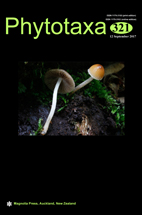Abstract
Semenovia torilifolia and S. malcolmii have been recorded to co-occur in Qinghai-Tibetan Plateau and adjacent regions. However, there were no available diagnostic characters to distinguish them. In the present study, we reconstructed the phylogeny based on nuclear ITS and ETS regions, and explored valid morphological traits through extensive fieldwork, specimen examinations and literature reviews, to determine the relationship between S. torilifolia and S. malcolmii. Our field investigations found that the morphological characters between S. torilifolia and S. malcolmii are continuous. Phylogenetic analyses revealed that S. torilifolia and S. malcolmii are nested together and formed a well-supported monophyletic taxa (90% BS, 1.00 PP) within Semenovia clade. It is thus sweeping concluded that S. torilifolia is conspecific with S. malcolmii.

